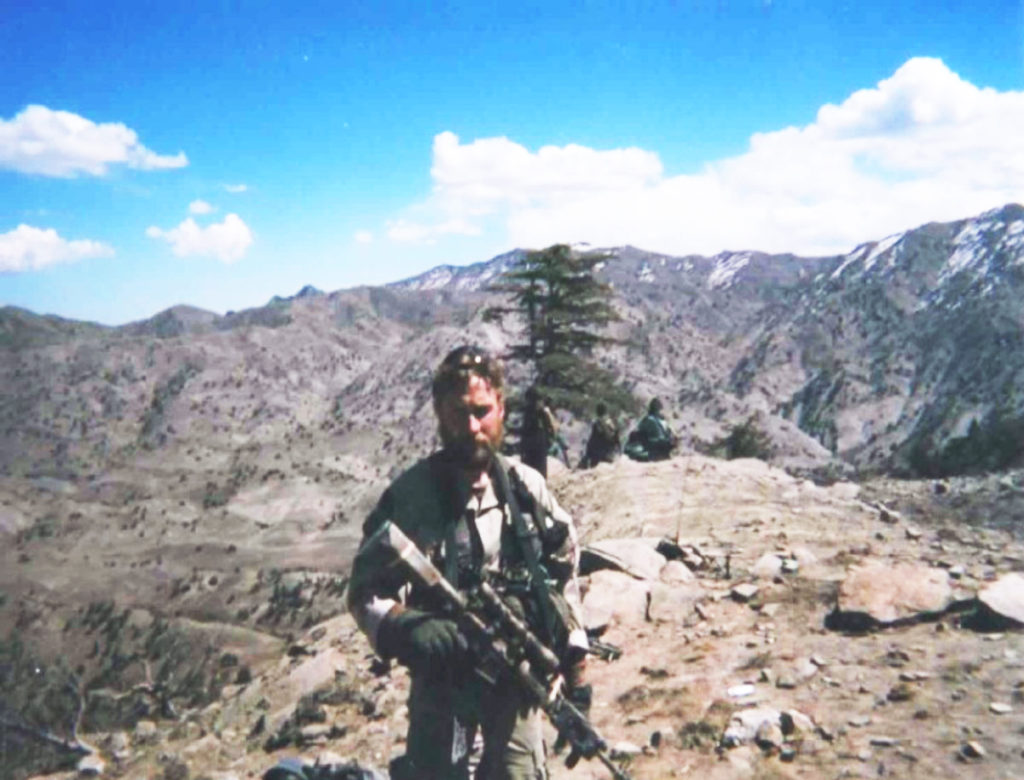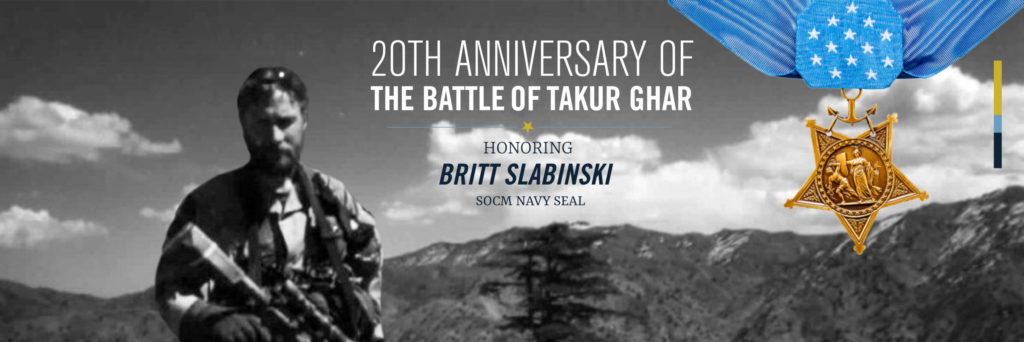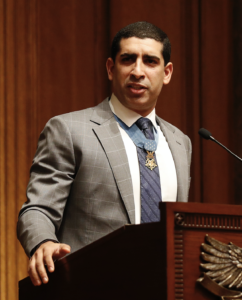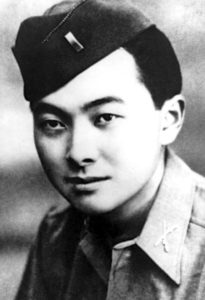
Born on December 1, 1969, in Northampton, Massachusetts, Britt Kelly Slabinski was dedicated to public service from a young age, becoming an Eagle Scout when he was fourteen years old. Graduating in 1988 from Smith Vocational and Agricultural High School, he enlisted in the U.S. Navy and went through boot camp in Orlando, Florida. Afterward, he attended Radioman Class “A” School in San Diego, California, learning the fundamentals of naval communications which would prove incredibly useful in his future career. Britt had always wanted to be a Navy SEAL and succeeded in the arduous process for qualification and acceptance into Basic Underwater Demolition/SEAL training (BUD/S) at Naval Amphibious Base in Coronado, California. After several months of intense training, he graduated as a member of BUD/S Class 164 in 1990.
From 1990-1993, Slabinski was a member of SEAL Team FOUR. He then served with the Naval Special Warfare Development Group until 2006. It was during this assignment that Senior Chief Slabinski would perform the acts of valor that would earn him the Navy Cross, later to be upgraded to the Medal of Honor, during the Battle of Takur Ghar/Roberts Ridge. Before dawn on March 4, 2002, Slabinski led a reconnaissance team—MAKO 30, composed of six Navy SEALs and Air Force Controller John Chapman—in a mission to the top of 10,000-foot mountain Takur Ghar. As his Medal of Honor citation reads, “Their insertion helicopter was suddenly riddled with rocket-propelled grenades and small arms fire from previously undetected enemy positions. The crippled helicopter lurched violently and ejected one teammate [Petty Officer First Class Neil Roberts] onto the mountain before the pilots were forced to crash land in the valley far below.”
With the full support of his teammates, Slabinski promptly decided to return to the mountaintop to rescue Roberts. After a replacement Chinook helicopter deployed the team, Slabinski and Chapman led an assault on well-entrenched enemy positions on Takur Ghar. His citation continues: “During reinsertion, the team came under fire from three directions, and one teammate [Chapman] started moving uphill toward an enemy strongpoint. Without regard for his own safety, Senior Chief Slabinski charged directly toward enemy fire to join his teammate. Together, they fearlessly assaulted and cleared the first bunker they encountered. The enemy then unleashed a hail of machine gun fire from a second hardened position only twenty meters away. Senior Chief Slabinski repeatedly exposed himself to deadly fire to personally engage the second enemy bunker and orient his team’s fires in the furious, close-quarters firefight.” Chapman was severely wounded and eventually killed in action. Slabinski, responsible for the safety of his entire team, continued the action.
The citation continues: “Proximity made air support impossible, and after several teammates became casualties, the situation became untenable. Senior Chief Slabinski maneuvered his team to a more defensible position, directed air strikes in very close proximity to his team’s position, and requested reinforcements. As daylight approached, accurate enemy mortar fire forced the team further down the sheer mountainside. Senior Chief Slabinski carried a seriously wounded teammate through deep snow and led a difficult trek across precipitous terrain while calling in fire on the enemy, which was engaging the team from the surrounding ridges. Throughout the next 14 hours, Senior Chief Slabinski stabilized the casualties and continued the fight against the enemy until the hill was secured and his team was extracted.”

Slabinski would remain deployed in combat for many days to come after this action, demonstrating the same selfless commitment to duty and the welfare of his teammates that he had shown on March 4. In 2006, he became Command Master Chief of Naval Special Warfare Tactical Development and Evaluation Squadron TWO, continuing to 2008. From then until 2010, he served as the Senior Enlisted Advisor of the Joint Special Operations Command in Washington, DC, and from then until 2012 he was Command Master Chief, Naval Special Warfare Group TWO. In all, Slabinski served in fifteen combat deployments before his retirement in June 2014 as Director of the Naval Special Warfare Safety Assurance and Analysis Program.
Awarded the Medal of Honor from President Donald J. Trump at the White House on May 24, 2018, Slabinski lives with his family (including a son who is an Eagle Scout) in California, where he serves as a corporate consultant. He is a member of the Board of Directors of the National Medal of Honor Museum Foundation. His military decorations, in addition to the Medal of Honor, include the Navy/Marine Corps Medal; Bronze Star with Valor (five awards), Combat Action Ribbon (two awards), Defense Meritorious Service Medal (two awards), Meritorious Service Medal (two awards), Joint Service Commendation Medal (two awards), Joint Service Achievement Medal, Navy and Marine Corps Achievement Medal (two awards), and Good Conduct Medal (8 awards).




